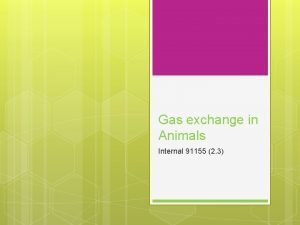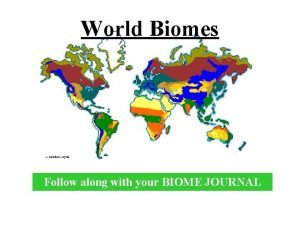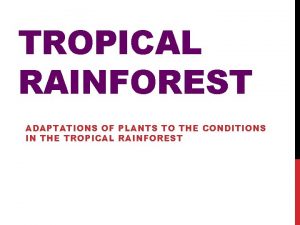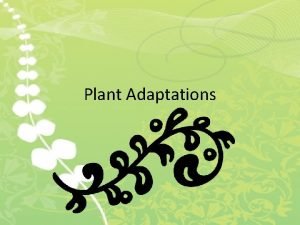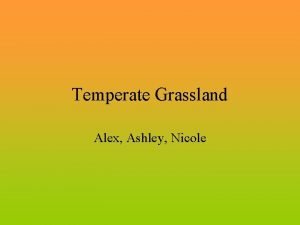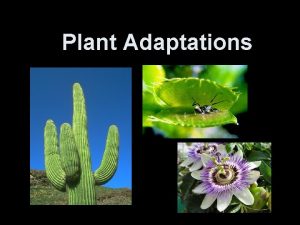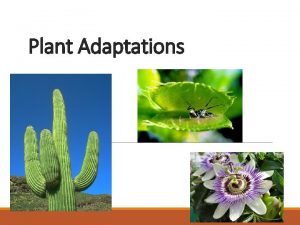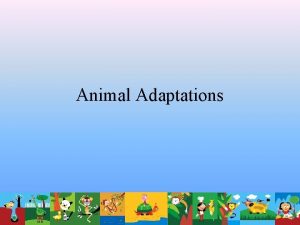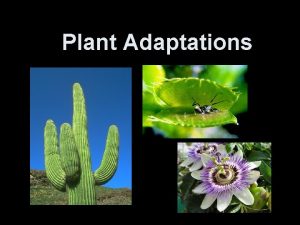Adaptations for Gas Exchange in Plants Gas exchange









- Slides: 9

Adaptations for Gas Exchange in Plants Gas exchange in all organisms including plants involves the diffusion of gases between the organism and the environment. All organisms need O 2 and give off CO 2 as a result of aerobic respiration. Plants, in addition, require CO 2 for photosynthesis and give off O 2 as a waste product of glucose production.

Where does gas exchange occur in plants? I. Leaves a. Gas exchange occurs in the leaves. The entry and exit of gases between the leaves and the environment is through the stomates. After entering the leaf through the stomates gases then enter the interconnecting spaces of the spongy mesophyll. The actual site of exchanges of gases (respiratory surface) occurs on the moist membranes of the mesophyll layer cells. b. If stomates are closed gas exchange cannot occur.

c. The rate of evaporation (transpiration) of water into the environment determines if stomates are open or closed. For example, if it is a dry day and the plant is losing too much water vapor, the stomates will close to conserve water. d. Guard cells control the opening and closing of stomates.

II. Stems a. On stems are small raised openings called lenticels. These areas where cells are loosely arranged with many intercellular spaces between them through which O 2 and CO 2 can be exchanged. III. Roots a. Gas exchange occurs across the moist membranes of the root hairs.

Gas Exchange in Animals I. Gas exchange in animals occurs through a respiratory surface. a. Characteristics of a respiratory surface: i. thin so diffusion can occur ii. moist, O 2 and CO 2 are in solution iii. Has to be in contact with a source of O 2 / CO 2 iv. In multicellular organisms needs to be near a transport system.

II. Protists, Monerans, and Fungi – O 2 and CO 2 are exchanged at the cell membrane by diffusion. The respiratory surface is external surface of the cell. III. Hydra – all cells are in contact with the watery environment. O 2 and CO 2 can diffuse across the cell membrane.

IV. Multicellular Complex Organisms a. Land vs. Water-dwelling organisms – The concentration of oxygen dissolved in water is less than 1%. In air, the concentration of oxygen is 21%. b. If an animal lives underwater it needs to move a lot of water over a large respiratory surface. The most common respiratory surface in water-dwelling animals are gills.

c. If an animal lives on land the concern is for drying out the respiratory surface. The most common respiratory surface in land-dwelling animals are internal lungs. d. To help organisms carry more oxygen, most have a respiratory pigment. A respiratory pigment allows blood to carry more oxygen. The respiratory pigment in most organisms is hemoglobin.

V. Earthworm a. An earthworm’s skin is its respiratory surface. The skin is thin and kept moist by mucus secreted onto it. Underneath the skin are capillaries which pick up oxygen from the environment via the skin.


